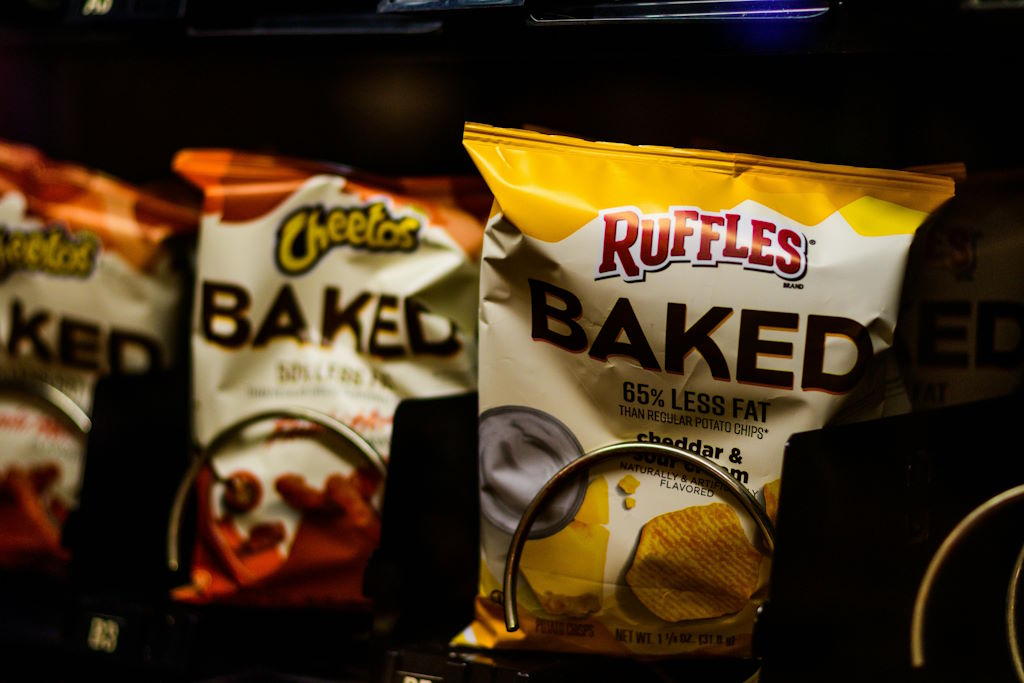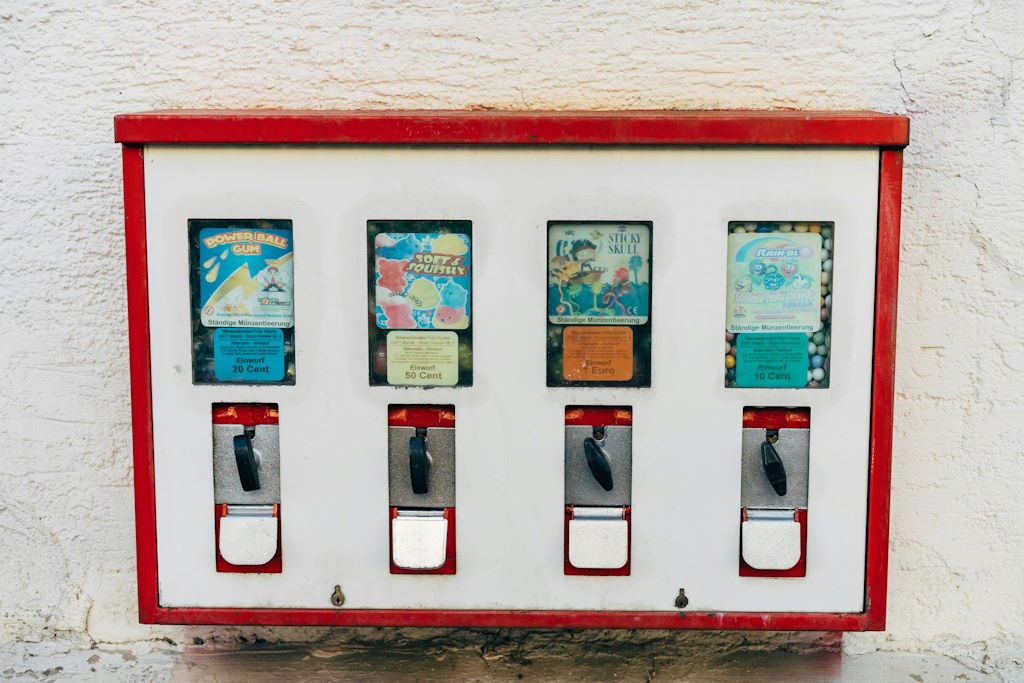From Corner Shops to Code: How Vending Machines Quietly Built the Next Microeconomy
 Photo by Bryce Carithers: https://www.pexels.com/photo/packed-junk-foods-in-a-vending-machine-11822977/
Photo by Bryce Carithers: https://www.pexels.com/photo/packed-junk-foods-in-a-vending-machine-11822977/Introduction
Walk down any busy street, step into an airport lounge, or pass through the lobby of a hospital, and you'll notice them quietly humming in the background: vending machines. For decades, these steel-and-glass boxes have been seen as humble conveniences — a quick way to grab a snack, a cold drink, or a last-minute necessity. But behind that familiar clunk of a dispensed lies a far more significant story.
Vending machines aren't just sidekicks to corner shops anymore. They've become catalysts in a new kind of commerce — one that merges physical presence with digital efficiency, low overhead with high scalability, and local accessibility with global technology. This silent evolution has quietly built what some experts are calling the next microeconomy — a network of small, independent, tech-enabled businesses that are redefining how money flows in communities.
The Corner Shop Era — And Why It Mattered
To understand how vending machines got here, we have to rewind to the days when neighborhood corner shops were the lifeline of daily commerce.
A corner shop wasn't just a place to buy milk and bread. It was community central — a hub where you exchanged gossip with the cashier, asked for change, or left with a candy bar “on credit” because they knew your family. These shops thrived on accessibility. They were close, personal, and available when larger supermarkets were miles away.
But they also had limitations: fixed opening hours, higher staffing costs, and limited physical space for inventory. That's where vending machines began their quiet infiltration.
From Afterthought to Anchor
In their early days, vending machines were almost laughably basic. You fed them coins, they dropped a product, and that was that. Their success came not from glamour, but from consistency. A vending machine never called in sick, didn't need lunch breaks, and didn't mind working 24/7 in the middle of nowhere.
Corner shop owners saw the potential. Placing a vending machine outside the store extended business hours without hiring more staff. Transit hubs and office lobbies started to see them as amenities that kept people satisfied without costly operations. Over time, vending machines went from being add-ons to becoming anchors of micro-commerce — small yet dependable revenue streams.
The First Wave of the Microeconomy: Passive, Predictable Profit
For decades, vending machines were part of an invisible economy: thousands of small operators, each running a handful of machines, collectively moving millions of dollars in cash flow. The economics were simple:
Low Overhead – No full-time staff needed.
Predictable Margins – A soda purchased for $0.50 could be sold for $1.25.
Passive Income Potential – Once placed, a machine could run for weeks before needing restocking.
The business model was so straightforward that people began forming small companies — sometimes even setting up an llc for vending machine operations — to protect personal assets and manage taxes more effectively. This wasn't just a side hustle; it was a legitimate small business model, accessible to almost anyone with the right location and a few thousand dollars to invest.
 Photo by Markus Winkler: https://www.pexels.com/photo/a-vending-machine-dispensing-bubble-gums-10303787/
Photo by Markus Winkler: https://www.pexels.com/photo/a-vending-machine-dispensing-bubble-gums-10303787/The Leap From Steel to Software
Then came the internet, and with it, a wave of digital transformation that vending machines didn't just survive — they thrived in.
Suddenly, machines weren't just static dispensers; they were connected devices. Modern vending machines could:
Track Sales in Real Time – Operators could see exactly what was selling without visiting the site.
Take Digital Payments – Cards, mobile wallets, and even cryptocurrency in some cases.
Offer Personalized Promotions – Discounts triggered by customer data or time of day.
Reduce Downtime – Machines could send alerts when stock was low or a coin slot jammed.
This transformation wasn't just a tech upgrade — it was a structural shift in the economy of vending.
Now, instead of running purely on foot traffic and guesswork, vending businesses became data-driven. This meant even a single-person operation with an LLC for vending machine ownership could compete with bigger operators by making smarter, faster decisions.
Vending Machines as Microeconomic Engines
Here's where things get interesting. The digitization of vending machines has allowed them to operate in niches that were impossible before. Think about it:
Hyper-Local Products – A vending machine in a college dorm might sell energy drinks and instant noodles, while one in a gym focuses on protein bars and recovery shakes.
Pop-Up Retail – Temporary vending setups at events can sell branded merchandise without needing staff.
Community Access Points – In rural areas, vending machines can dispense essentials like phone chargers or hygiene products where no store exists for miles.
This flexibility has created what economists would call a microeconomy — a network of small, self-contained businesses that feed into the larger economy but operate with hyper-specific targeting.
A vending operator today can manage ten machines across different niches, each optimized for its environment. Instead of one large store serving a broad audience, you have ten “micro-stores,” each fine-tuned to its exact customer base.
The Side Hustle Revolution
The rise of side hustles has brought even more attention to vending. Unlike e-commerce, which can be crowded and volatile, vending has tangible assets and steady local demand.
Entrepreneurs are discovering that:
You can start with one or two machines and grow at your own pace.
Forming an LLC for vending machine ownership adds legal and financial protection.
Locations are diverse — offices, apartment complexes, schools, hospitals, transit hubs.
Technology removes many of the old headaches, like guessing inventory needs.
It's not unusual now for someone with a day job to run a small vending operation on the side, generating hundreds (sometimes thousands) in monthly passive income. Multiply that by thousands of operators worldwide, and you start to see the scale of this microeconomy.
The Invisible Network That Powers Communities
The most fascinating part? The vending machine microeconomy is often invisible to the casual observer. You may not notice it, but every time you buy from a machine, you're participating in a decentralized, community-driven commerce network that:
Employs local operators and restockers.
Generates rental income for the host location.
Circulates money within the local economy.
It's a quiet but powerful reminder that sometimes, the most impactful economic shifts don't come from boardrooms or skyscrapers — they come from the corner of a hallway, humming gently as they dispense a can of soda.
Final Thoughts — The Steel Box That Coded a New Economy
From the corner shop to the cloud, vending machines have journeyed from analog simplicity to digital sophistication. They've evolved from background convenience to frontline retail, from single-purpose snack dispensers to multi-function commerce hubs.
In doing so, they've built a microeconomy that empowers local entrepreneurs, enhances community access, and keeps money circulating in places that need it most. Whether you're a tech innovator, a community planner, or someone considering setting up an LLC for vending machine ownership, the vending revolution offers a unique window into the future of small-scale, tech-enabled business.
And maybe — just maybe — the next time you hear that familiar thunk of a product dropping, you'll know you're not just buying a snack. You're participating in an economic revolution that's been quietly building for decades.
839GYLCCC1992




Leave a Reply